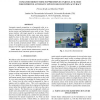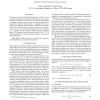2047 search results - page 47 / 410 » The limits of speech recognition |
IROS
2007
IEEE
14 years 3 months ago
2007
IEEE
Automatic speech recognition on a humanoid robot is exposed to numerous known noises produced by the robot’s own motion system and background noises such as fans. Those noises i...
ICASSP
2011
IEEE
13 years 12 days ago
2011
IEEE
We propose Cross-Channel Spectral Subtraction (CCSS), a source separation method for recognizing meeting speech where one microphone is prepared for each speaker. The method quick...
SPEECH
1998
13 years 8 months ago
1998
We present the theory for heteroscedastic discriminant analysis (HDA), a model-based generalization of linear discriminant analysis (LDA) derived in the maximum-likelihood framewo...
ICPPW
2006
IEEE
14 years 2 months ago
2006
IEEE
Speech recognition has become common in many application domains, from dictation systems for professional practices to vocal user interfaces for people with disabilities or hands-...
LREC
2008
13 years 10 months ago
2008
In this paper we describe an approach that both creates crosslingual acoustic monophone model sets for speech recognition tasks and objectively predicts their performance without ...


